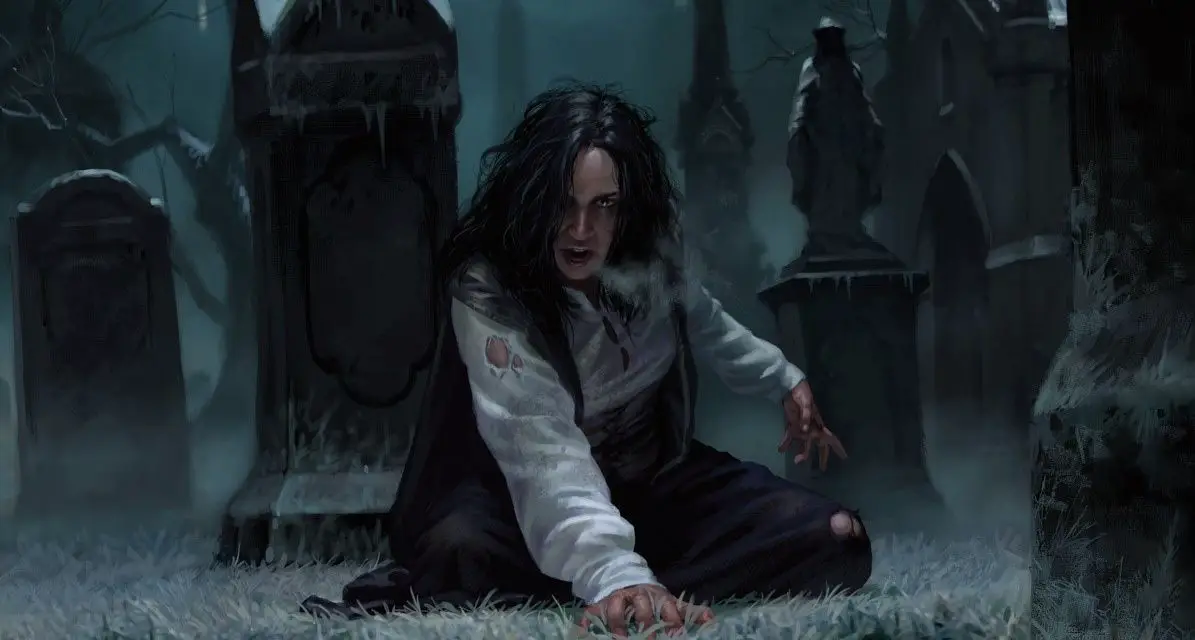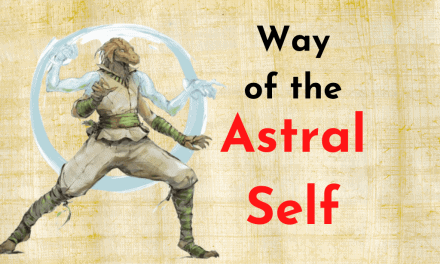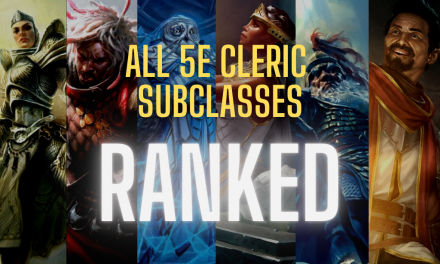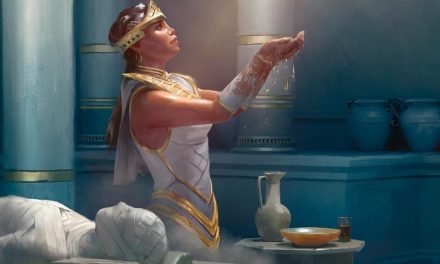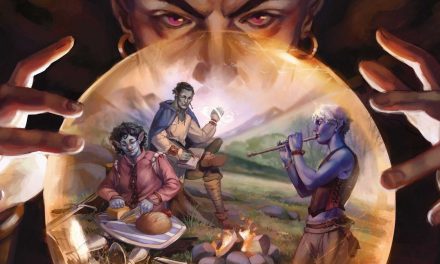Warlocks who enter the service of the Undead Patron in D&D 5e have made their pact with death itself.
These characters seek to gain their patron’s knowledge of how to break free from the cycle of life and death. As their patron bestows more knowledge and power upon their loyal servant, the Warlock steadily becomes something… grimly different…
Whether the character has a fear of dying or grander ambitions that would require far more than one mortal lifetime to achieve, the pact has been made.
Today we’re going to the graveyard and digging up all of the secrets to eternal life in D&D 5e. Or at least… something that might be considered some kind of life…
This is the full guide to the Undead Warlock in D&D 5e!
What is the Undead Warlock in D&D 5e?
The Undead Warlock is one of two new subclass options introduced in Van Richten’s Guide to Ravenloft.
Alongside the College of Spirits Bard from the same book, it’s an option that’s sure to satisfy those who are looking to add an extra element of the macabre to their character.
Just like the Undying Warlock, the Undead Warlock’s patron is a powerful entity that has unlocked the secret to conquering death.
If you also read my guide to the Undying Warlock, you’ll see that a lot of themes overlap here. However, the Undead Warlock still stands apart as its own distinct subclass option for Warlocks.
If you are interested in becoming a lich, you might have pledged yourself to a being like the demilich Acererak or the dracolich Dragotha. If you’re more drawn to one day becoming a vampire, it’s possible that Strahd Von Zarovich or Kas the Bloody-Handed have taken you under their (bat) wing.
Personally, I think an Undead Warlock who has pledged themselves to a Mummy Lord like the undead pharaoh Ankhtepot would be especially interesting to play.
Whatever Patron you choose, you now live to exert their will on the world. In return, you hope to also conquer the grave with their assistance.
Related: The Ultimate Guide to Warlock Patrons in D&D 5e
Role in the Party
The Undead Warlock’s primary role in the party is dealing damage, particularly necrotic damage.
While you can certainly build your character to be more melee-focused if you wish, the Undead Warlock is particularly suited for blasting enemies from the party’s backline.
However, they do have some spells and abilities that allow them to offer some extra utility to the party. Offering some buffs to the party while also being geared to put some nasty debuffs on enemies lets the Undead Warlock fit pretty comfortably as a mix of a supporting caster and straight-up blaster.
This is even further enhanced by the subclass’s features which increase both your damage output and overall survivability!
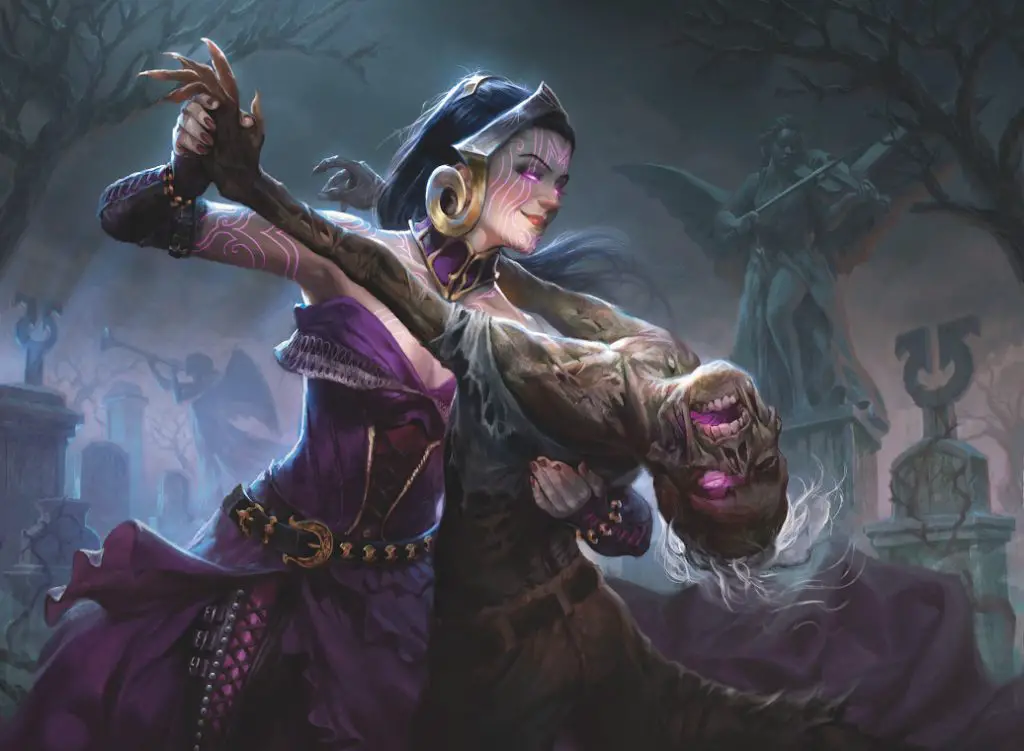
Undead Warlock Features 5e
Alright, so we’ve covered what the Undead Warlock is and their role in the party. Now let’s get into the good stuff!
Expanded Spell List
Choosing the Undead Patron gets you an expanded spell list!
| Spell Level | Spells |
| 1 | Bane, False Life |
| 2 | Blindness/Deafness, Phantasmal Force |
| 3 | Phantom Steed, Speak With Dead |
| 4 | Death Ward, Greater Invisibility |
| 5 | Antilife Shell, Cloudkill |
Bane and False Life are actually pretty solid level 1 spells. Bane lets you infuriate your enemies by reducing their rolls while False Life lets you bolster yourself with some temporary hit points. Both of these spells will serve you well even as you continue to level up.
For your level 2 spells, Blindness/Deafness is absolutely a winner and is a fantastic debuff. Phantasmal Force, on the other hand, is one of the spells that’s situationally useful but hard to fully justify using in most occasions.
Remember: you have very limited spell slots as a Warlock so you need to focus on using what you know works!
Your level 3 spells are fun thematically, but ultimately they’re kind of “meh.” Speak With Dead can be useful on occasion, but I’m not sure it’s worth using the spell slot for. Phantom Steed can be fine for a quick getaway, but you’re unlikely to ever really use it.
The level 4 spells make up for how forgettable the level 3 spells were.
Death Ward is perfect for having a little extra insurance against you or an ally meeting an untimely end. Great Invisibility is one of the strongest buffs in the game since the invisible character doesn’t reappear when they attack or cast a spell.
Lastly, the level 5 spells round out the Undead Warlock’s expanded spell list.
Antilife Shell is incredibly useful in situations where it can actually matter. I’m not sure I’d count on having too many of those moments though. If you’re clever, though, Cloudkill can be absolutely devastating to enemies.
Be aware of the concentration requirements on many of these spells! All in all, it’s a solid spell list that focuses heavily on debuffing and punishing enemies while also offering some extra “oomph” to your own party.
Related: Concentration in D&D 5e Explained
Form of Dread (Level 1)
Your level 1 feature, Form of Dread, lets you take on a terrifying new form that gives you several buffs.
This feature is going to be at the core of how your character plays as an Undead Warlock. It reminds me a lot of the Circle of Spores Druid’s Symbiotic Entity feature in how it works.
As a bonus action, you take on your Form of Dread for 1 minute. You can do this a number of times per long rest equal to your proficiency bonus. On a long rest, you regain all expended uses.
Form of Dread Benefits
While you’re using your Form of Dread, you gain three benefits. At later levels, your other features will gain extra benefits when you’re in your Form of Dread.
First, you gain temporary hit points equal to 1d10 plus your Warlock level.
Being able to give yourself an extra pool of hit points as a bonus action is pretty good. It’s not enough to get overly excited about, but it can still make sure that you’re able to take a few extra hits in combat!
You are also immune to the frightened condition.
Undead and some Fey creatures are pretty fond of inflicting this condition. It can be difficult to overcome for most characters, but you’ve got nothing to worry about now!
If you get frightened, just use a bonus action to take your Form of Dread and see who’s screaming now! (Hint: with your next benefit, it will probably be the enemy!)
Best of all, you gain the ability to frighten your enemies.
Once during each of your turns, you can force an enemy that you hit with an attack roll to make a Wisdom saving through against your Spell Save DC. If they fail, they are frightened of you until the end of your next turn.
This means that when you Eldritch Blast an enemy or smack them with your weapon of choice, they are going to have a lot less options in the combat. They can’t move closer to you if they’re frightened and any attacks they make against you will be at disadvantage.
If you inflict this on a boss enemy, the combat can become almost laughably easy. This is especially true if the target isn’t so good at Wisdom saves!
Related: Conditions in D&D 5e explains more about the frightened condition (among others!)
What Does Your Form of Dread Look Like?
When you activate your Form of Dread, there should be some type of reflection of your patron.
If you’ve chosen a lich as your patron, dark shadows might manifest around you to form some kind of dark robes and crown. Your eyes might vanish into dark shadowy pools of despair as your skin seems to rot and decay.
A vampire patron, on the other hand, might influence your Form of Dread by making your skin grow pale as you take on bat-like facial features. Flowing behind you is a whisping cloak of shadow and your teeth grow noticeably sharper.
Likewise, a mummy patron might see your form shifting to mimic a preserved corpse that glows with arcane burial symbols. Desert sand may slowly sprinkle out from rotted holes on your body as you transform.
Ultimately this is all flavor, but there’s a lot for you to have fun with here!
You’ll be using your Form of Dread a lot so get creative with new ways to terrify your enemies! (Probably your allies too, if we’re being honest…)
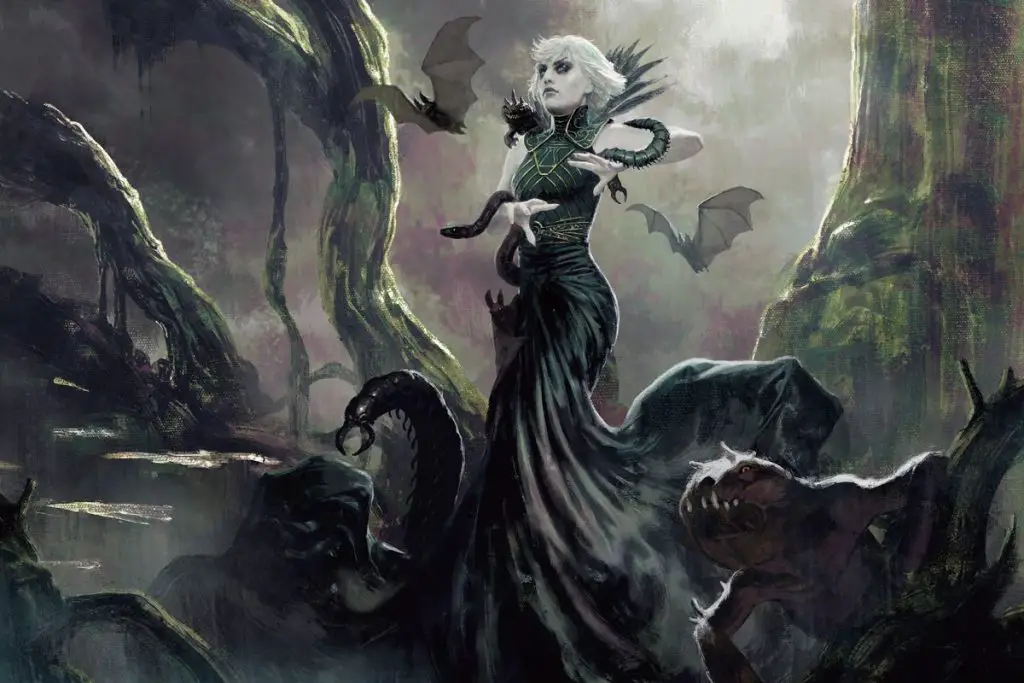
Grave Touched (Level 6)
Your patron’s undead power flows through you and removes your need to eat, drink, or breathe.
You’ll still need to sleep, but that can be overcome if you take the Aspect of the Moon Invocation available to Warlocks who take the Pact of the Tome.
This is pretty similar to the feature that Undying Warlocks get at level 10, but you get it sooner. In fact, it’s actually even better thanks to the second part of the Grave Touched feature!
Once during each of your turns, when you hit a creature with an attack roll and roll damage against the creature, you can replace the damage type with necrotic damage.
This gets even better if you’re currently in your Form of Dread.
While you are using your Form of Dread, you can roll one additional damage die when determining the necrotic damage the target takes.
If you’re going against Undead enemies, this feature won’t be doing you any favors since they’ll likely resist or be immune to necrotic damage. Otherwise, this is a solid opportunity to buff up your damage output.
Against enemies that aren’t resistant to necrotic damage (or even better: vulnerable to it!), activate your Form of Dread and give them some to be truly terrified of!
Necrotic Husk (Level 10)
Speaking of resisting necrotic damage, your body is now overflowing with necrotic energy.
You now have resistance to necrotic damage. When you are in your Form of Dread, that’s switches to being immune to necrotic damage!
Try as they might, Undead and Necromancers who try to stand against you will find themselves having a very bad time!
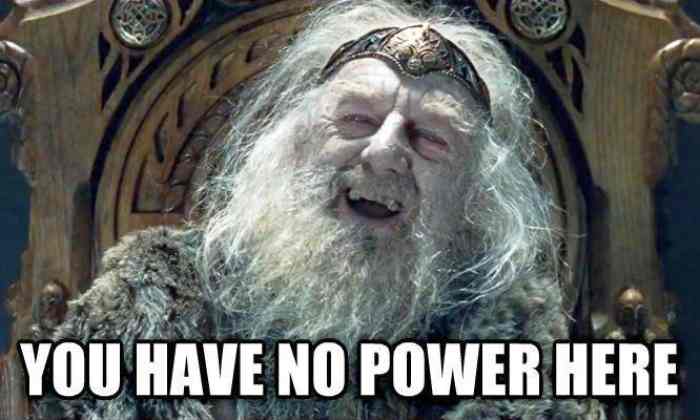
But it gets better!
When you would be reduced to 0 hit points, you can use your reaction to drop to 1 hit point instead and cause your body to erupt with deathly energy.
Each creature of your choice within 30 feet of you takes necrotic damage equal to 2d10 + your Warlock level. You then gain 1 level of exhaustion.
Once you use this reaction, you can’t do so again until you’ve finished 1d4 long rests.
Talk about cheating death in style!
Not only can you stay standing, but the huge blast of necrotic damage you release can potentially clear the field of enemies! Unless any of the creatures resist necrotic damage, they’ll be taking the full brunt of the explosion. No save or anything!
Have a plan to deal with the level of exhaustion that you gain from this ability, but don’t be scared to use this when you need to!
Spirit Projection (Level 14)
The Undead Warlock’s capstone ability is Spirit Projection. As far as capstones go, this is just overflowing with both flavor and mechanical potential!
With this ability, you’re able to separate your spirit from your body as an action. You leave your unconscious body behind in a state of suspended animation.
You can use Spirit Projection once per long rest.
You’re able to project your spirit for one hour or until your concentration is broken. When the effect ends, you can either have your spirit return to your body OR have your body magically teleport to your spirit’s location.
Be aware that any damage or effects that affect either your spirit or body while using Spirit Projection also effect the other one.
Related: The Complete Guide to the Warlock Class in D&D 5e!
Spirit Projection Benefits
When you’re using your Spirit Projection feature, you gain four benefits.
First, both your spirit and body gain resistance to bludgeoning, piercing, and slashing damage.
Secondly, casting spells of either the Conjuration or Necromancy schools doesn’t require verbal, somatic, or material components. The only exception is if the spell requires a material component with a specific gold cost.
The third benefit you gain when using Spirit Projection is that your spirit has a flying speed and can hover. This flying speed is equal to your walking speed.
As a spirit, you’re also able to pass through creatures and objects. These count as difficult terrain. Be careful not to end your turn inside a creature or object as you will take 1d10 force damage if you do so!
The last benefit given to you by the Spirit Projection feature is an added bonus if you’re using your Form of Dread while you are projecting.
Once during each of your turns when you deal necrotic damage to a creature and are in your Form of Dread while projecting your spirit, you regain hit points equal to half of the necrotic damage you dealt.
Using Spirit Projection
One of my favorite things about Spirit Projection is that there’s not just one way to use it.
Immediately, there’s some incredible scouting potential with this feature.
Being able to pass through walls and fly for an hour at a time means that you can do some major reconnaissance for your party. You don’t have to stay within a certain range of your body, so you are able to cover a ton of ground!
If you’re feeling particularly crafty, you might even use the opportunity to sabotage some of the enemy’s base. If you get caught, at least you’ve got resistance to whatever melee damage you might take!
As far as using Spirit Projection in combat goes, you’re a beast!
Having resistance to bludgeoning, slashing, and piercing damage makes you quite a bit tougher since you’ll only be taking half damage. Furthermore, having a flying speed lets you outmaneuver most enemies!
Of course, the real benefit is being able to heal when you’re dealing necrotic damage while also using your Form of Dread.
Adding extra necrotic damage to your Eldritch Blast with your Grave Touched feature in combination with Spirit Projection means you’ll be incredibly hard for enemies to take down!
Just make sure you keep your body somewhere safe while you’re using this in combat. Otherwise, your plan could backfire pretty quickly!
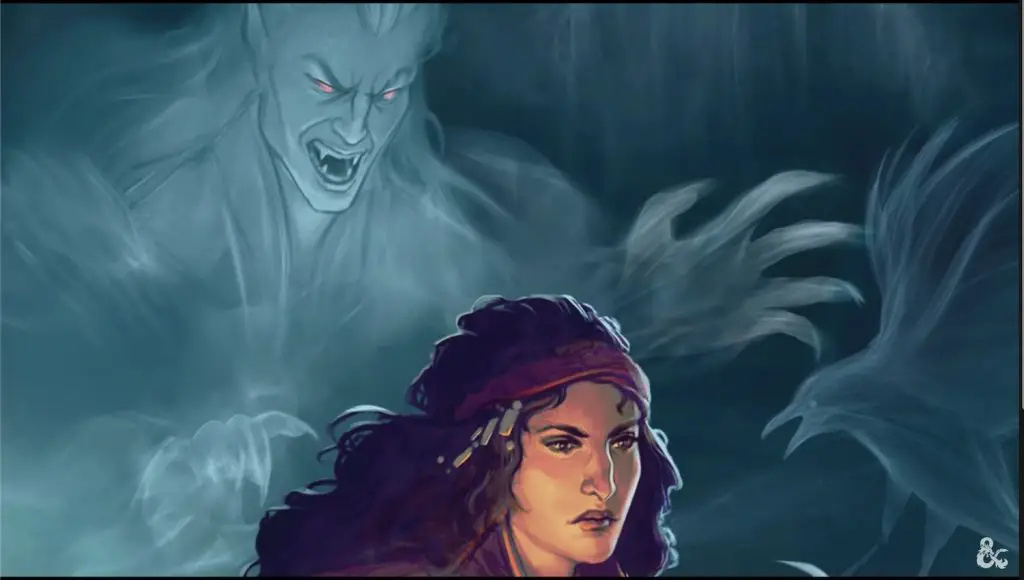
Pact Boons for Undead Warlocks 5e
At level 3, you’ll be choosing a Pact Boon.
The Pact Boon that you choose works to further determine how your character plays. Each Pact offers some extra benefit in addition to some options for your Eldritch Invocations that are exclusive to Warlocks who have made that pact.
This is an overview of each Pact option as it applies to Undead Warlocks. However, you can learn more about Pact Boons and how they work by clicking here!
Pact of the Blade
As you probably expect, Pact of the Blade is the go-to option for the melee-focused Warlock.
If you’re looking for a more optimized pick for an Undead Warlock, this just isn’t it. There’s just not a lot of synergy between the Undead Patron’s features and a melee combatant.
Your Form of Dread gives you an extra pool of temporary hit points and your Spirit Projection can make you extra hardy at the later levels, but I don’t know that that’s enough to consider this a “good” option.
You’ll simply be putting out much more damage with Eldritch Blast.
If you do decide to take this Pact Boon, you’ll want to heavily focus on your Dexterity and use a finesse weapon like a rapier. Otherwise, you just won’t have the Armor Class to stand on the frontlines for very long!
Pact of the Chain
The Pact of the Chain is arguably the best Pact Boon for most Warlocks. Having a familiar is always incredibly useful and the Imp is a particularly powerful ally to have in the early levels of the game.
That said, the Undead Warlock is pretty solid in the early levels when Pact of the Chain would typically be the most useful. There’s really not a lot of slack to pick up!
If you want a little companion to help you as a scout or extra ally in combat, this isn’t really a bad choice. However, I don’t think the Undead Warlock can really benefit from this one quite as much as most other Warlocks.
Pact of the Talisman
I’m torn between the Pact of the Talisman and the Pact of the Tome as my favorite choice for Undead Warlocks.
With the Pact of the Talisman, you’re able to more passively support your allies. With whoever is wearing the talisman gaining bonuses to their rolls, it can have some great effects that just might tilt the scales in your party’s favor.
I’m also a fan of the Eldritch Invocations available to Warlocks who take the Pact of the Talisman.
You’re already a great blaster, so this is a solid option if you want to add some extra support to your team.
Pact of the Tome
Of course, you might also just decide to double-down on your role as a caster.
Like I mentioned, I’m torn between this and the Pact of the Talisman. Both have some great potential for the Undead Warlock.
Eldritch Blast is almost certain to be your go-to cantrip, but gaining some new ones to offer some extra utility or damage options isn’t a bad thing at all!
If you want to focus on blasting your enemies to kingdom come, this is a solid choice. You’ll still have some ability to support your party as well, it will just take a more active approach than the Pact of the Talisman.
Related: Eldritch Invocations for Warlocks in 5e (Explained + Best Picks!)
Connections
Connecting the Undead Warlock to your party and game world prompts the same questions that I asked in my guide to the Undying Warlock.
No pact is a small thing, but especially not one of this nature! Did you enter this pact out of desperation or a genuine desire?
Furthermore, what have you sacrificed to place yourself on this path toward an undead eternity? Do you feel remorse for making those sacrifices or are they something that you’re proud of?
Also worth considering: how open are you about your character’s ultimate goals? Undead aren’t exactly loved by… well… anyone really…
The thing about living forever is that it gets very lonely. Has your character experienced this loneliness yet or do they think that, in some way, this is exactly how they can escape that loneliness?
I don’t see an Undead Warlock having a particularly happy story. I mean, it was introduced in the Ravenloft campaign setting after all!
Consider this: is the character’s greatest tragedy behind them and pushing them towards this pact as an escape or is it still yet to come?
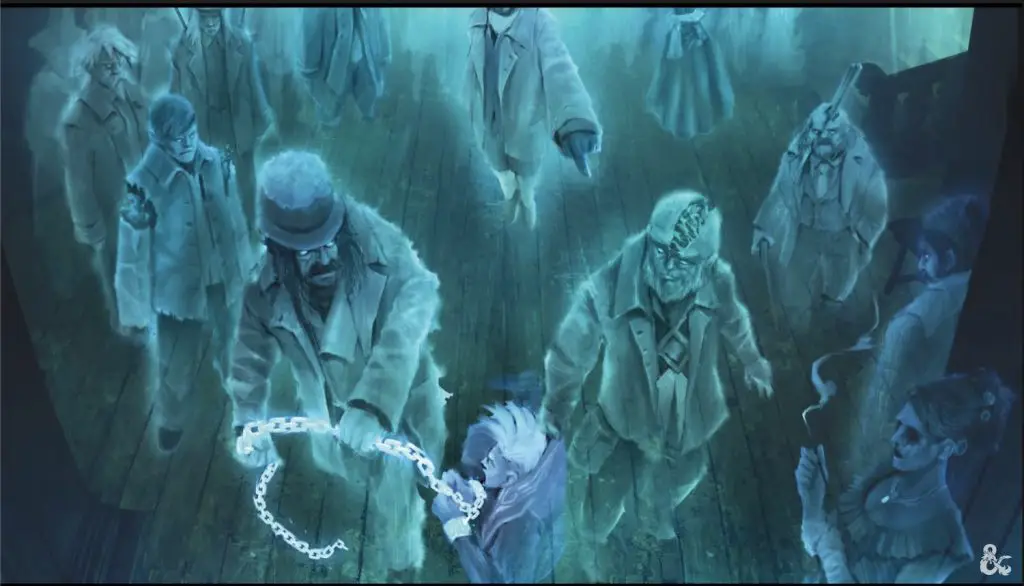
Is the Undead Warlock Good?
As I mentioned, there are a lot of similarities between the Undead Warlock and the Undying Warlock.
There are enough differences to make them two distinct subclasses, but it seems like the Undead Warlock is what Wizards of the Coast was trying to accomplish with the Undying Warlock.
I’d say that they nailed it!
If you’re looking for all kinds of dark magic and ghoulish abilities, I’d definitely recommend going with the Undead Warlock over the Undying.
All in all, the Undead Warlock is a powerful subclass that is totally worth considering. Its biggest weakness is its focus on putting out necrotic damage which could be troublesome in campaigns that feature a lot of undead enemies.
Want to see how it compares to the other Warlock options? Check out my ranking of every Warlock subclass in D&D 5e!
Conclusion – Undead Warlock in D&D 5e Guide
The Undead Warlock is an exciting (though grim) subclass option available to Warlocks since the release of Van Richten’s Guide to Ravenloft. (You can find my review of that campaign setting here!)
There’s a lot to this subclass, but I think it still stays very focused on what the experience of playing such a character is supposed to be. It’s powerful, creepy, and just a little unsettling!
Personally, I can’t wait to roll one of these characters for myself the next time I’m a player!
Want more Warlock-y goodness? Check out my Ultimate Guide to Warlock Patrons in D&D 5e!
Also, don’t forget to sign up for my newsletter below to stay up to date with all of the latest tips, tricks, news, and more for D&D 5e!
You can also follow me on Facebook and Twitter.
If you found this article helpful and want to support the site, you can buy me a coffee here! (It’s not expected, but very appreciated!)

